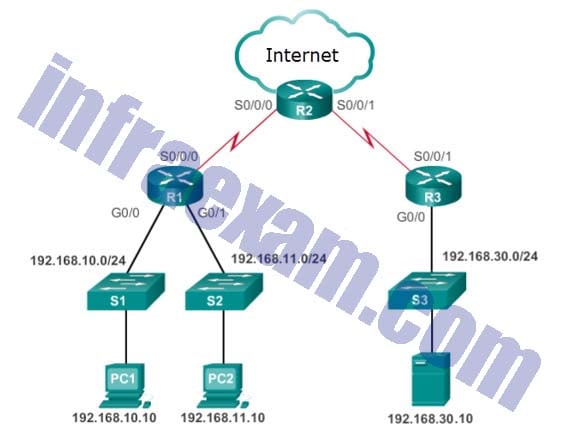Refer to the exhibit. The company has provided IP phones to employees on the 192.168.10.0/24 network and the voice traffic will need priority over data traffic. What is the best ACL type and placement to use in this situation?

- extended ACL inbound on R1 G0/0
- standard ACL inbound on R1 vty lines
- standard ACL inbound on R1 G0/1
- extended ACL inbound on R3 G0/0
| Explanation & Hint:
To prioritize voice traffic over data traffic, an Access Control List (ACL) can be used to identify the traffic and then classify it so that Quality of Service (QoS) policies can be applied. In this scenario, you’d typically want to use an extended ACL because standard ACLs can only filter traffic based on source IP addresses, whereas extended ACLs can filter based on both source and destination IP addresses as well as the protocol type, which is necessary to identify voice traffic specifically. The placement of the ACL is also important. To ensure that voice traffic is given priority, the ACL should be applied as close to the source of the traffic as possible. This means applying the ACL on the interface where the traffic originates or enters the router, which in this case would be Router R1’s G0/0 interface because it is directly connected to the 192.168.10.0/24 network where the IP phones are located. So, the best ACL type and placement in this situation would be: Extended ACL inbound on R1 G0/0. This configuration allows you to match the IP phones’ traffic specifically and set the necessary QoS policies right as the traffic enters R1, before it gets mixed with other traffic on the network. |